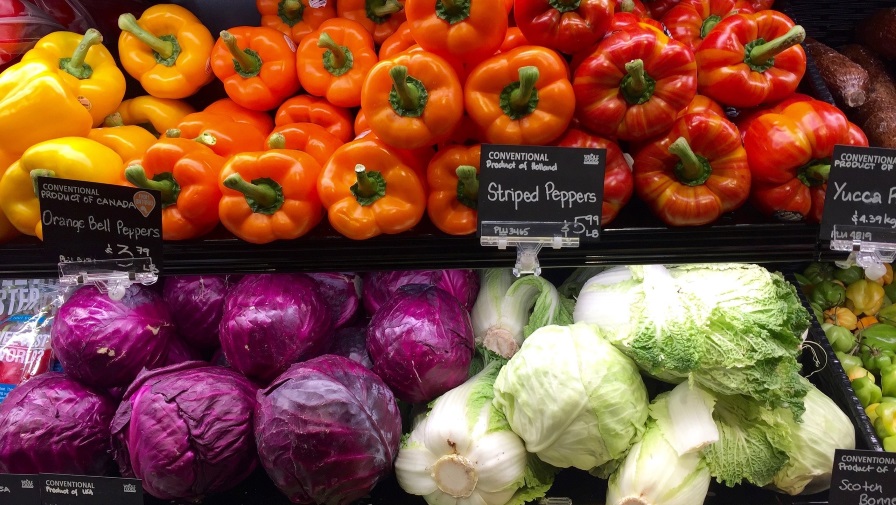What Hurricanes Teach Us About Forecasting Plant Diseases
 The threat of hurricanes — again! Hurricane Florence reminded us how vulnerable growers are to natural disasters. Wind and flooding destroyed crops throughout the Carolinas and took the lives of 48 people as of the end of September. Unfortunately, additional threatening hurricanes will follow in Florence’s wake in seasons to follow.
The threat of hurricanes — again! Hurricane Florence reminded us how vulnerable growers are to natural disasters. Wind and flooding destroyed crops throughout the Carolinas and took the lives of 48 people as of the end of September. Unfortunately, additional threatening hurricanes will follow in Florence’s wake in seasons to follow.
Predicting Hurricanes
Forecasting hurricanes has come a long way. The worst natural disaster in our country’s history was the 1900 hurricane that leveled Galveston, TX. Residents of that city had one day of warning before the storm swept away the city, killing somewhere between 6,000 and 20,000 people.
Today, meteorological researchers and professionals can estimate the general nature and path of hurricanes, such as Sandy (2012) and Florence (2018), as many as six, seven, even eight days in advance.
Here are the main reasons we have better predictions:
Research
First and foremost is the dedication and commitment made to meteorological research. Such focus allows scientists to study the weather and physics as they pertain to hurricane formation.
Technology
Along with the research comes the needed technology to generate and then evaluate weather data used in predicting storms. Weather professionals now have diverse tools available: satellites, reconnaissance aircraft, weather balloons, land-based radar, instruments mounted on ships and buoys, and sondes (instruments that can transmit data real-time when dropped into hurricanes and storms).
Computational technology advancements have also improved the accuracy of weather forecasts. Modern computers can crunch through magnitudes of more data than older systems. All these data collected by weather instruments and satellites would not be accessible or usable to forecasters unless there was a corresponding advancement in these computational sciences.
Organization
None of this would be effective without proper infrastructure. The National Oceanic and Atmospheric Administration (NOAA), National Hurricane Center (NHC), and Hurricane Specialists Unit (HSU) provide a system and a structure for gathering and analyzing hurricane data and, in turn, issue warnings about projected hurricane strength and movement.
It took a combination of focused research, development of the right tools, and creation of an organized system to make possible the advancements we have in hurricane prediction technology.
Threat of Crop Diseases
Compared to the threat posed by a hurricane like Florence, the threat of diseases on one’s crops is, of course, miniscule. The human suffering inflicted by such storms far outweighs the problems that molds, mildews, and rots cause on agricultural commodities.
The advancements in hurricane prediction can serve as a reminder about the importance of predictive science in agriculture. The ability to forecast the onset and development of crop diseases has great value to the business of agriculture.
If growers can have advance warnings on when and to what degree a pathogen will damage their crops, they can deploy appropriate disease management practices in a timely manner. Predictive systems potentially can increase crop yields and quality while also reducing inputs, such as pesticides, that are wasted if applied at the wrong time.
Predicting Plant Diseases
Like hurricane predictions, the forecasting of plant diseases has benefited from focused research, the development of better instrumentation, and the creation of organized infrastructures to gather and analyze data.
Research
Universities and other institutions have been pursuing disease prediction models for many years. We have models to anticipate disease developments in diverse crops such as corn, soybean, tomato, carrot, celery, lettuce, potato, asparagus, grape, and tobacco.
As researchers increase their understanding of the biology and epidemiology of pathogens, models undergo alterations and improvements. As researchers learn more about pathogen-plant-environment interactions, they can better identify the type of data they need to enhance prediction models.
Technology
The data needed to implement a disease-forecasting model generally fall into two categories: environmental factors; and pathogen inoculum.
Environmental Factors
Much like hurricanes, plant diseases occur when certain weather conditions are present. Therefore, it is critically important to measure the pertinent weather parameters that allow disease to take place.
Thanks to strides made by meteorologists, agriculturalists have access to national, regional, and local weather data that can be used for plant disease predictions. Hurricane predictions are made possible by deployment of sophisticated instruments that collect weather data; plant disease predictions likewise rely on accurate and reliable automated weather instruments that can be placed in and near crop fields.
Agriculturalists now use innovative sensors, data loggers, and communication improvements (e.g., cellphones, satellites, Wi-Fi) that monitor variations in microclimates around fields.
Pathogen Inoculum
The other data needed to predict plant diseases is information on the presence, absence, and level of pathogen inoculum. Plant diseases will not occur if the pathogen either is not present in the field or the inoculum is below a threshold that would potentially cause disease.
Disease prediction systems therefore use detection equipment that search for and quantify pathogen spores in the air. The sophistication and accuracy of these spore traps have increased, thereby improving the accuracy of plant disease predictions.
Organization
Data and findings for predicting hurricanes are useless if there is no organization and infrastructure in place that can collect, analyze, and apply such information.
In agriculture, plant disease forecasting likewise requires dedicated personnel. They collect weather information, analyze and interpret the data, and then relay forecasts to farmers and field personnel. Historically, this role has been taken on by various universities and regional research teams. These teams are models of collaboration that include university academics, extension personnel, federal researchers, and industry members.
An Example of Real-World Prediction

California research on downy mildew of spinach includes using sensitive weather instruments, innovative spore traps, and DNA detection methods to predict when the disease might occur. Photo by Steven T. Koike
Out in the West, research on a damaging disease of spinach demonstrates some of the advancements made in disease forecasting.
A team of USDA researchers, university campus academics, county-based extension agents, and various members of the agricultural industry partnered to develop a forecasting system for spinach downy mildew.
Spore trap samplers comb the air near spinach fields, seeking to snag spores of the downy mildew pathogen. They then use sensitive DNA assays to detect the specific spinach pathogen while ignoring the DNA of closely related mildews. Wind speed, temperature, and other factors are monitored and then are analyzed to determine their role in downy mildew severity.
Using information on weather conditions and the status of swirling mildew spores around fields, such research may eventually lead to predictive warnings about imminent infection, thereby giving growers notice that disease management steps need to be taken.










